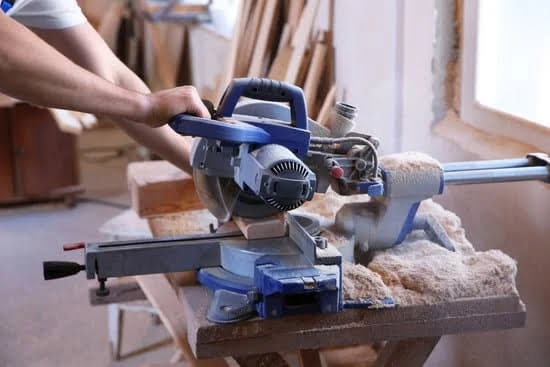Are you interested in learning how to start woodworking at home? Woodworking is not only a practical and creative hobby, but it also offers a wide array of benefits that can enhance your overall well-being.
From the satisfaction of creating something with your own hands to the stress-relief and mindfulness that comes with working with wood, there are countless reasons why woodworking is a rewarding pursuit. In this article, we will explore the various aspects of starting woodworking at home, from setting up your workspace to understanding different types of wood and their uses, as well as essential skills, safety precautions, and resources for beginners.
One of the most appealing aspects of woodworking at home is the ability to create something tangible and lasting. Whether you’re making furniture, decorative items, or small projects around the house, woodworking allows you to express your creativity while producing functional pieces that can be enjoyed for years to come. Additionally, working with wood can be incredibly therapeutic and calming, providing a sense of accomplishment and fulfillment as you bring your ideas to life.
In the following sections, we will delve into the practicalities of starting woodworking at home, including finding the right area and tools for your workspace, learning about different types of wood and their uses, acquiring essential skills, planning your projects, prioritizing safety measures, accessing resources for beginners, troubleshooting common issues, and even taking your woodworking journey to more advanced levels.
Whether you’re a complete novice or someone looking to expand their woodworking skills further, this comprehensive guide will help you embark on a fulfilling woodworking journey from the comfort of your own home.
Setting Up Your Workspace
First, consider the size of the space you have available. You’ll need enough room to comfortably move around your workbench and tools, as well as space for storing wood and other materials. Ensure that the area is well-ventilated and has good lighting to create a safe and pleasant working environment.
Next, gather the necessary tools for your woodworking projects. Basic hand tools such as hammers, chisels, saws, and screwdrivers are essential for any woodworking project. Investing in power tools like a drill, sander, and jigsaw can also help you complete projects more efficiently. Consider setting up a dust collection system to keep your workspace clean and safe from airborne particles.
Once you have established your workspace and gathered the necessary tools, you’ll be ready to start creating beautiful pieces of furniture or decor right in your own home. As with any new skill, practice makes perfect – so don’t be afraid to make mistakes along the way. Get creative with your projects, and don’t forget to enjoy the process of learning how to start woodworking at home.
| Woodworking Tools | Workspace Essentials |
|---|---|
| Hammers | Well-ventilated area |
| Saws | Good lighting |
| Screwdrivers | Storage space for materials |
Understanding Wood
Woodworking at home can be a rewarding hobby, but in order to create beautiful and sturdy projects, it’s important to have a good understanding of the different types of wood and their uses. There are many different varieties of wood available, each with its own unique characteristics and suitability for different types of projects.
Understanding these differences can help you choose the right type of wood for your projects and ensure that they turn out just the way you want them to.
When starting woodworking at home, one of the first things to consider is the type of wood that is best suited for your project. Hardwoods like oak, maple, and cherry are known for their durability and strength, making them great choices for furniture-making. On the other hand, softwoods like pine, cedar, and redwood are often used for outdoor projects due to their natural resistance to moisture and decay.
Another important factor to consider when choosing wood for your projects is the grain pattern. Some woods have a straight grain, while others have a more pronounced pattern with swirls or waves. Understanding how different grain patterns can affect the appearance of your finished project is essential when selecting wood for your woodworking endeavors.
In addition to hardwoods and softwoods, there are also engineered woods such as plywood and MDF that are commonly used in woodworking projects. These materials offer versatility and stability, making them suitable for a wide range of applications. By familiarizing yourself with the characteristics of different types of wood, you can confidently choose the best material for each project you undertake.
| Wood Type | Best Use |
|---|---|
| Oak | Furniture-making |
| Pine | Outdoor projects |
| Plywood | Versatile applications |
Essential Woodworking Skills
Learning the basics of woodworking is essential for anyone looking to start this craft at home. Whether you want to create simple furniture, decorative items, or even undertake bigger projects, having a good grasp of the foundational skills will set you on the right path. Here are some key woodworking skills that beginners should focus on:
- Measuring and marking: Accurate measurements and markings are crucial in woodworking to ensure the pieces fit together properly. Learning how to use measuring tools such as tape measures, rulers, and squares is fundamental.
- Cutting techniques: Understanding different cutting techniques using hand saws, power saws, and other cutting tools is important. Learning how to make straight cuts, angled cuts, and curved cuts will be essential for various woodworking projects.
- Joinery: Knowing how to join wood pieces together using techniques like butt joints, miter joints, dovetail joints, and more is a foundational skill that every woodworker should master.
As you begin your journey into woodworking at home, it’s important to practice these basic skills repeatedly until you feel comfortable with them. In addition to honing your skills through practice, there are plenty of resources available online and in books that provide detailed instructions on these essential woodworking techniques.
Recommended Resources for Learning Woodworking Skills
- “The Complete Book of Woodworking” by Tom Carpenter
- WoodworkingSkill.com – A website offering tutorials and tips for beginners
- Local woodworking classes or workshops in your area where you can get hands-on instruction
By focusing on learning these foundational skills and utilizing available resources, you can gradually build your confidence as a woodworker and eventually take on more challenging projects as you progress.
Planning Your Projects
When starting out with woodworking at home, one of the most important steps is planning your projects and choosing the right ones to begin with. Here are some tips for how to start woodworking at home and select your first woodworking projects:
1. Assess Your Skill Level: Before diving into a complex project, it’s important to realistically assess your current skill level. If you’re a complete beginner, start with simple projects that will help you learn and practice basic woodworking techniques.
2. Consider Your Tools and Workspace: Take stock of the tools you have available and the space in which you’ll be working. Choose projects that align with the tools you have and ensure they can be completed comfortably in your workspace.
3. Choose Small, Manageable Projects: For beginners, small projects like a cutting board, picture frame, or simple shelf are great starting points. These projects allow you to hone your skills without feeling overwhelmed.
As you progress in your woodworking journey and gain more experience, you can gradually take on more advanced projects that challenge your skills and creativity. Remember to always prioritize safety and have fun as you develop your woodworking abilities at home.
Safety First
Woodworking can be a highly rewarding and enjoyable hobby, but it’s important to prioritize safety when working with wood and power tools. Whether you’re a beginner or an experienced woodworker, taking the necessary precautions can help prevent accidents and injuries. In this section, we will discuss some important safety measures that every woodworker should be mindful of.
Protective Gear
One of the most crucial aspects of woodworking safety is wearing the proper protective gear. This includes safety goggles to protect your eyes from flying debris, ear protection to guard against noisy power tools, and a dust mask to prevent inhalation of sawdust and other particles. Additionally, it’s important to wear fitted clothing and avoid loose sleeves or jewelry that could get caught in machinery.
Tool Safety
Before using any power tool, it is essential to thoroughly read the manufacturer’s instructions and guidelines for safe operation. Keeping tools properly maintained and sharp can also reduce the risk of accidents. When using hand tools such as chisels or saws, always make sure to use them in a controlled manner to prevent slipping and causing injury.
Workshop Organization
Keeping a clean and organized workspace is key to preventing accidents in woodworking. Cluttered work areas can increase the risk of tripping or knocking over tools and materials. It’s also important to have a designated area for each tool and to keep them stored safely when not in use. Additionally, having a fire extinguisher on hand in case of emergencies is highly recommended.
By being mindful of these safety precautions, you can enjoy woodworking at home without compromising your well-being. Always remember that safety should be your top priority when pursuing this fulfilling hobby.
Resources for Beginners
For those looking to learn how to start woodworking at home, there are plenty of resources available to help guide beginners through the process. Whether it’s books, websites, or communities, these resources can provide valuable information and support for those just starting out in the craft.
Books
There are numerous books available that cater to beginners who want to learn the basics of woodworking. These books cover a wide range of topics such as tool selection, wood types, and essential skills.
Some popular titles include “The Complete Manual of Woodworking” by Albert Jackson and David Day, “The Essential Woodworker” by Robert Wearing, and “Woodworking Basics: Mastering the Essentials of Craftsmanship” by Peter Korn. These books can serve as comprehensive guides for individuals eager to dive into the world of woodworking.
Websites
In today’s digital age, there is an abundance of online resources dedicated to woodworking. Websites like The Wood Whisperer and Fine Woodworking offer tutorials, project plans, and tips for beginners. Online forums such as Sawdust Making 101 and WoodNet provide a platform for woodworkers to share their experiences and seek advice from more experienced craftsmen. These websites are invaluable sources of information for anyone looking to start woodworking at home.
Communities
Joining a woodworking community can be incredibly beneficial for beginners. Whether it’s a local woodworking club or an online group, being part of a community provides opportunities for networking, learning from others, and receiving support and encouragement. Many communities also organize workshops and events tailored towards beginners to help them develop their skills. Being part of a community allows newcomers to connect with like-minded individuals who share the same passion for woodworking.
By utilizing these resources, beginners can gain valuable knowledge on how to start woodworking at home while feeling supported in their journey into this rewarding craft.
Troubleshooting
When starting out in woodworking, it is common to encounter various issues and challenges along the way. From dealing with misaligned cuts to having difficulty with assembling parts together, troubleshooting is an essential skill for every woodworker to master. Understanding how to identify and overcome these common problems can help improve your woodworking experience and lead to more successful projects.
One of the most common issues that beginners face is dealing with rough or uneven cuts. This problem can often be attributed to blunt or improperly set blades on tools such as saws and planes.
To overcome this, it’s essential to regularly sharpen and maintain your tools, ensuring that they are in optimal condition for use. Additionally, taking the time to properly set up and adjust your tools before starting a project can help minimize the risk of rough cuts.
Another frequent issue for beginners is struggling with joinery and assembly. Whether it’s achieving a tight-fitting joint or aligning pieces accurately, joinery can be a challenging aspect of woodworking.
One way to overcome this challenge is by practicing proper measuring and marking techniques, as well as utilizing clamps and other aids to hold pieces in place during assembly. Taking the time to understand different joinery methods and practicing them on scraps of wood can also help improve your skills in this area.
Lastly, wood movement and warping are common issues that woodworkers may encounter, especially when working with different types of wood. Understanding how different types of wood react to changes in humidity and temperature can help you anticipate potential warping or movement issues in your projects. Properly acclimating your wood before use, as well as using appropriate fastening methods such as screws or pocket hole joinery, can help minimize the impact of wood movement on your projects.
By learning how to troubleshoot these common issues in woodworking, beginners can gain confidence in their skills and improve the quality of their projects. Whether it’s through regular tool maintenance, practicing joinery techniques, or understanding wood behavior, overcoming these challenges is an important part of learning how to start woodworking at home.
Taking It to the Next Level
In conclusion, starting woodworking at home can be a rewarding and fulfilling hobby for those looking to unleash their creativity and learn new skills. Whether you are interested in creating practical furniture or intricate decorative pieces, woodworking offers a wide range of possibilities for self-expression and craftsmanship.
As you become more experienced in woodworking, you may find yourself wanting to explore advanced techniques and take on more challenging projects. This can include mastering joinery methods, carving intricate designs, or working with exotic wood species. The key is to continue learning and experimenting with new skills, as it will not only improve your abilities but also expand your horizons as a woodworker.
To take your woodworking to the next level, consider seeking out mentorship from experienced woodworkers, attending workshops or classes, and investing in higher quality tools and equipment. Additionally, don’t be afraid to push the boundaries of your creativity and tackle ambitious projects that may seem daunting at first. With dedication and perseverance, you can elevate your woodworking skills and produce remarkable pieces that showcase your talent and passion for the craft.
So why wait? Start exploring how to start woodworking at home today.
Frequently Asked Questions
Can I Teach Myself Woodworking?
Yes, it is possible to teach yourself woodworking. There are many resources available such as books, online tutorials, and classes that can help you learn the basics of woodworking. It will require time, patience, and practice to develop your skills.
How Do I Start Woodworking With No Experience?
If you have no experience in woodworking, a great way to start is by familiarizing yourself with basic tools and their uses. Consider starting with simple projects like a basic shelf or a small stool. Additionally, watching instructional videos and seeking guidance from experienced woodworkers can also be beneficial.
How Do I Start Woodworking From Scratch?
Starting woodworking from scratch involves learning about different types of woods, understanding how to use hand and power tools safely, and practicing various techniques such as measuring, cutting, and joining wood. It’s important to start with simple projects and gradually progress to more complex ones as you build your skills.
Seeking mentorship or attending woodworking classes can also provide valuable guidance for beginners.

Hi everyone! I’m a woodworker and blogger, and this is my woodworking blog. In my blog, I share tips and tricks for woodworkers of all skill levels, as well as project ideas that you can try yourself.





